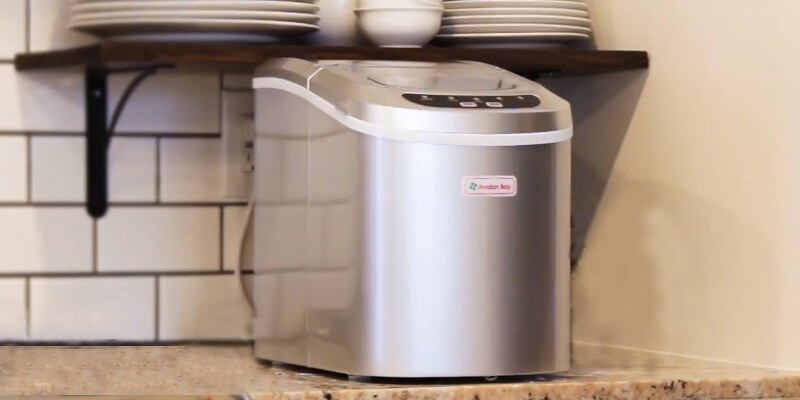A clean and well-maintained commercial ice maker machine is essential for ensuring that the ice produced is not only of high quality but also safe for consumption. Regular cleaning and sanitization of your ice maker are crucial to prevent the growth of harmful bacteria and the accumulation of mineral deposits that can affect the taste and quality of the ice. In this article, we’ll guide you through the steps to effectively clean and sanitize your commercial ice maker machine, ensuring that it operates at its best.
Why Clean and Sanitize Your Ice Maker:
Cleaning and sanitizing your commercial ice maker is not only about maintaining its performance but also about ensuring the safety and well-being of your customers and clients Commercial Ice Maker Machines. Here are some key reasons why regular cleaning and sanitization are essential:
- Food Safety: Ice is often in direct contact with food and beverages, so maintaining cleanliness and preventing contamination is critical to food safety.
- Taste and Quality: Clean equipment produces ice with a fresh, neutral taste. Dirty or contaminated ice can negatively impact the flavor and quality of drinks and dishes.
- Longevity: Regular cleaning and maintenance help extend the life of your ice maker, reducing the need for costly repairs or replacements.
- Energy Efficiency: A clean machine operates more efficiently, consuming less energy and reducing operational costs.
Steps to Clean and Sanitize Your Commercial Ice Maker Machine:
Read the Manufacturer’s Manual:
Before you start cleaning your ice maker, familiarize yourself with the manufacturer’s manual. Each ice maker may have specific instructions and guidelines for cleaning and maintenance. Make sure to follow these recommendations.
Gather Your Supplies:
Collect the necessary cleaning supplies, which typically include warm water, mild detergent, a soft brush, a sanitizer solution, a clean cloth or sponge, and a bucket.
Safety Precautions:
Ensure that the ice maker is disconnected from the power source before you begin the cleaning process to avoid any electrical hazards.
Empty and Defrost the Ice Bin:
Start by emptying the ice bin, and discarding any ice. If your ice maker has an automatic defrost cycle, allow it to complete the defrosting process.
Remove and Clean Components:
Remove any removable components, such as the ice scoop, water distribution tubes, and the ice bin. Wash these components in a sink with warm, soapy water. Use a soft brush to scrub away any mineral deposits or scale buildup.
Clean the Interior:
Use a mixture of warm water and mild detergent to clean the interior surfaces of the ice maker, including the evaporator, water distribution components, and the ice bin. Be thorough in removing any visible residue or deposits. Avoid using abrasive materials that could damage the equipment.
Sanitize the Ice Bin:
After cleaning, sanitize the ice bin by filling it with a sanitizer solution according to the manufacturer’s recommendations. Let it sit for the specified contact time, typically around 10-15 minutes. Rinse the bin thoroughly with clean water to remove any sanitizer residue.
Clean the Condenser Coils:
Dust and debris can accumulate on the condenser coils, affecting heat dissipation and energy efficiency. Use a soft brush or compressed air to remove any buildup. Cleaning the coils can help your machine operate at peak performance.
Inspect the Water Filter:
If your ice maker is equipped with a water filtration system, check the filter. If it’s dirty or clogged, replace it according to the manufacturer’s recommendations to ensure the quality of the water used in ice production.
Check the Water Inlet Valve:
Inspect the water inlet valve for any mineral deposits or scale buildup that may affect water flow. If necessary, clean or replace the valve to ensure a consistent water supply.
Reassemble the Components:
Once all the components are clean and sanitized, reassemble the ice maker, ensuring that everything is properly connected and in its correct position.
Restart the Ice Maker:
Reconnect the ice maker to the power source and restart it. Allow it to produce a batch of ice, and discard the first batch to ensure that any cleaning residue is removed from the system.
Regular Maintenance:
Establish a regular cleaning and maintenance schedule for your ice maker. Depending on usage and water quality, this may be weekly or monthly. Document your cleaning schedule to track maintenance and compliance with health and safety regulations.
Additional Tips for Cleaning and Sanitizing:
- Use a food-safe sanitizer to ensure that the ice maker is safe for food contact.
- Pay attention to the ice scoop and holder, which also need regular cleaning and sanitization to prevent contamination.
- When using detergents or sanitizers, follow the manufacturer’s instructions regarding concentration, contact time, and safe handling.
- Ensure that the water supply to the ice maker is clean and treated to prevent mineral deposits or scale buildup in the system.
- Consider the installation of a water filtration system to improve water quality, which can impact the taste and cleanliness of the ice.
- Periodically check the ice quality to ensure it remains clear, odorless, and tasteless. If you notice any off-flavors or odors, it may be a sign of a need for more thorough cleaning or water filtration maintenance.
Conclusion
In conclusion, cleaning and sanitizing your commercial ice maker machine is not only a matter of equipment maintenance but also a critical aspect of food safety and quality. Regular cleaning and maintenance ensure that your ice maker continues to produce high-quality ice that enhances the taste and presentation of your products. By following the steps and tips outlined above, you can keep your ice maker in excellent working condition, extend its lifespan, and provide your customers with safe and refreshing ice for their drinks and dishes.

